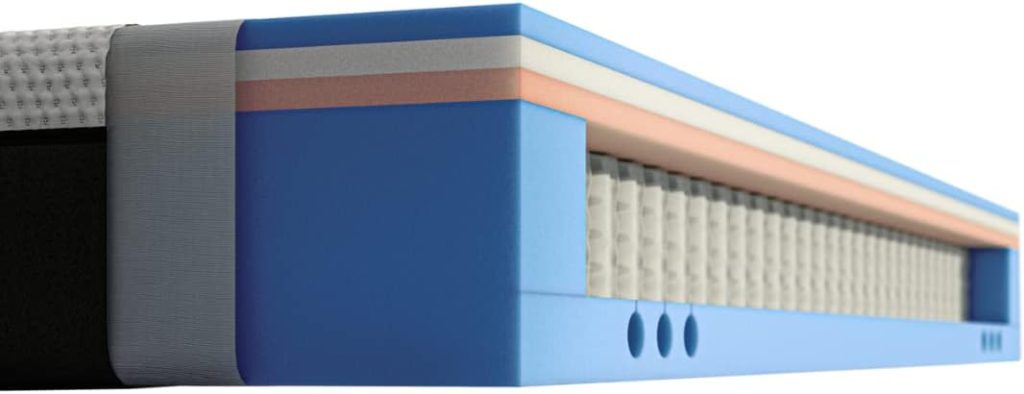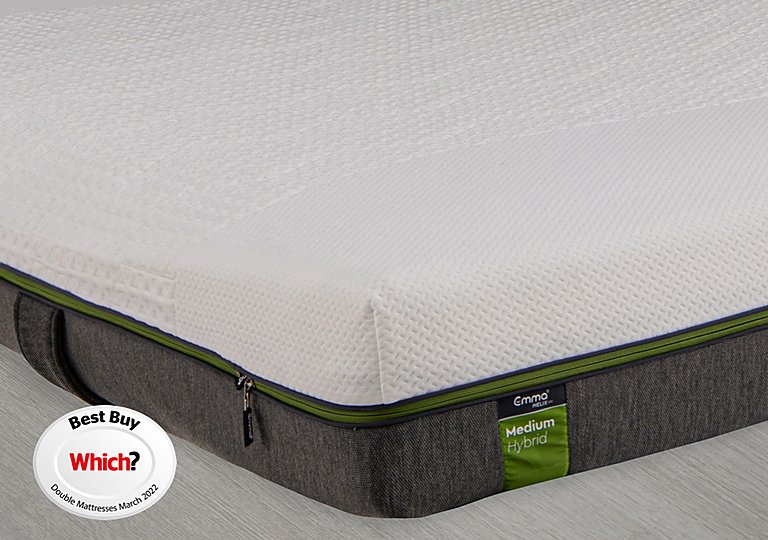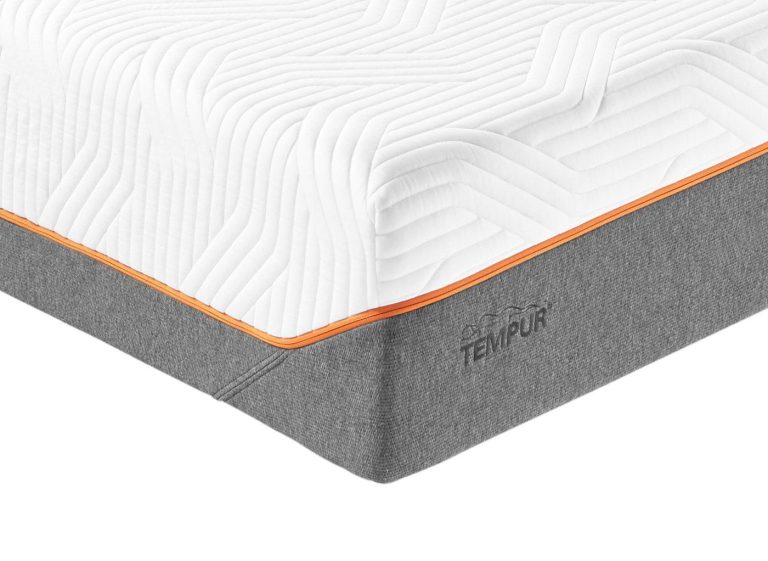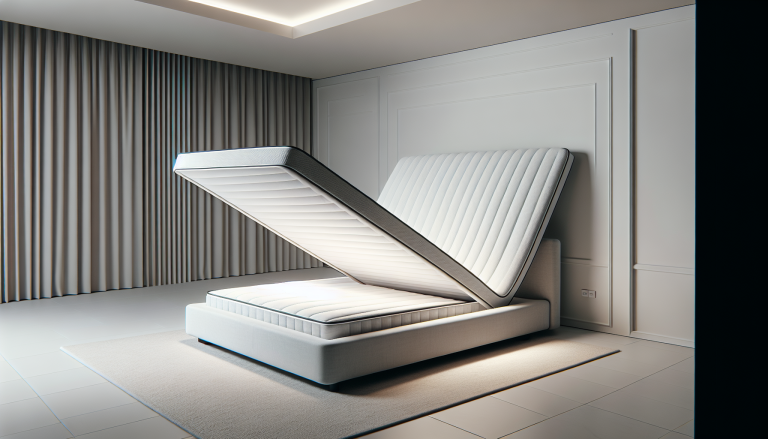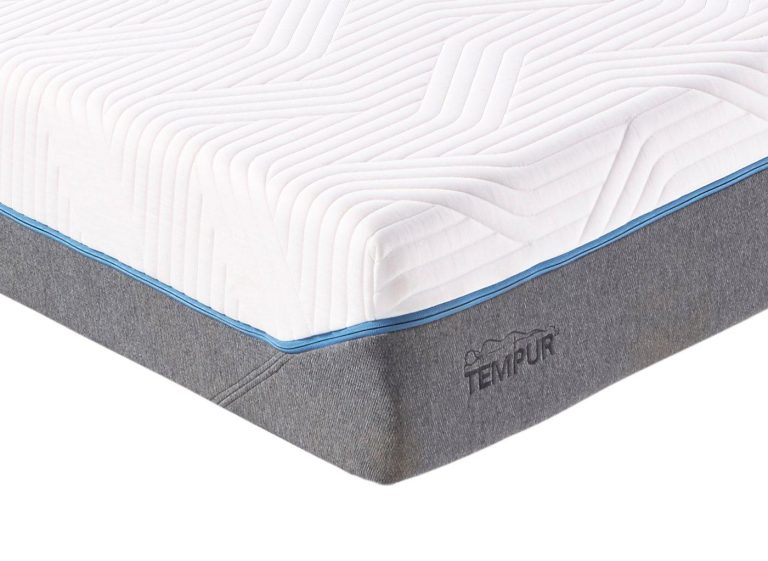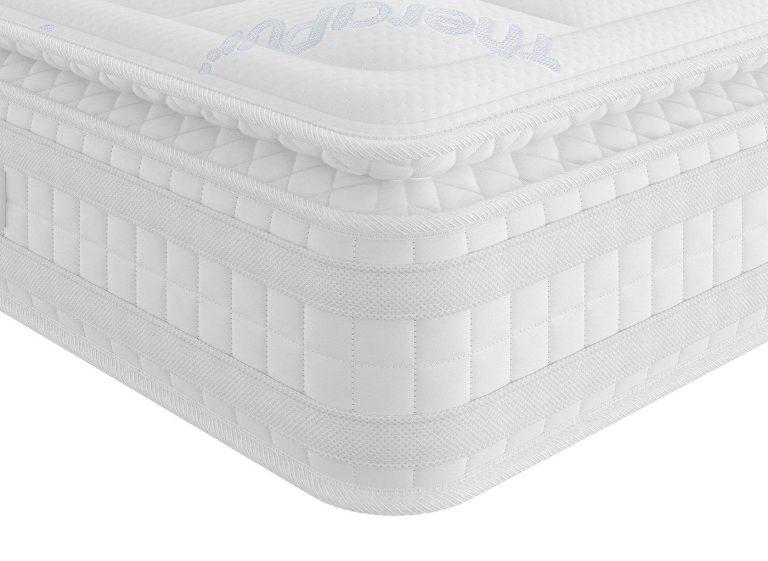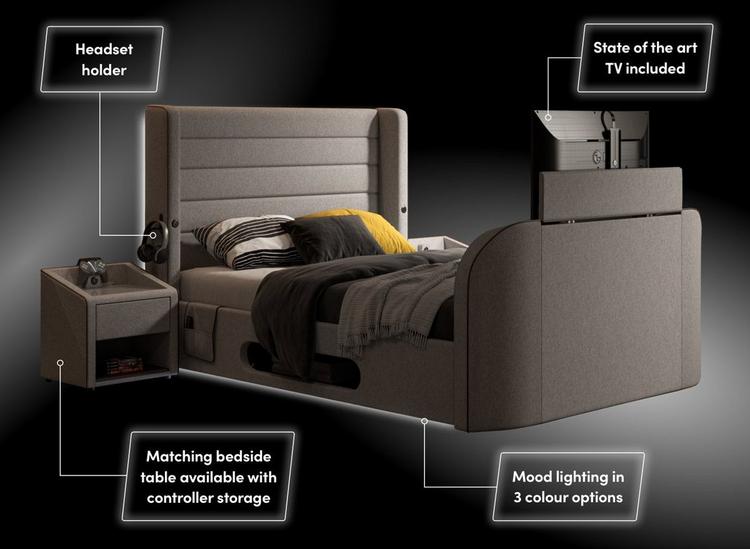Imagine sinking into a cosy bed after a long, tiring day. What makes that experience even better? It’s the comfort provided by your mattress! But have you ever wondered how the number of layers in a mattress can affect how comfortable it feels? Well, get ready to uncover the secrets! In this article, we will explore how the number of layers in a mattress influences its level of comfort, allowing you to make an informed decision when choosing the perfect mattress for a good night’s sleep.
Table of Contents
Toggle1. Material of the Mattress
When it comes to choosing a mattress, one of the first factors to consider is the material it is made of. There are several options available in the market, each with its own unique characteristics and benefits. Let’s explore the different materials commonly used in mattresses.
1.1 Memory Foam
Memory foam mattresses have gained immense popularity over the years due to their ability to contour to the body’s shape and provide excellent pressure relief. This material is known for its responsiveness to heat and pressure, allowing it to mould to your body as you lie on it. Memory foam mattresses also absorb movement, making them a great choice for couples or individuals who share a bed.
1.2 Latex
Latex mattresses are made from natural or synthetic latex, a material known for its durability and bounce. Unlike memory foam, latex mattresses have a more responsive feel and provide better spinal alignment. They are also naturally breathable, which helps regulate temperature and prevent the buildup of heat. Latex mattresses are a fantastic choice for those who prefer a slightly firmer surface and want a mattress with natural elements.
1.3 Innerspring
Innerspring mattresses use a traditional coil system as their primary support structure. These mattresses are known for their excellent bounce and support. The coil system allows for increased airflow, ensuring a cool and comfortable sleeping experience. Innerspring mattresses are available in various firmness levels, making them suitable for a wide range of sleepers. They are also great for individuals who prefer a more traditional feel and extra support.
1.4 Hybrid
Hybrid mattresses combine the benefits of different materials, typically memory foam or latex, with an innerspring coil system. These mattresses strive to provide the perfect balance of support, pressure relief, and temperature regulation. The combination of different materials allows for increased airflow, optimal weight distribution, and excellent motion isolation. Hybrid mattresses are an ideal choice for sleepers who want the best of both worlds.
2. Importance of Layering in Mattresses
Now that we have explored the different materials used in mattresses, let’s delve into the importance of layering. Layering refers to the arrangement of different materials within the mattress, with each layer serving a specific purpose. The layering design significantly impacts the overall comfort and performance of the mattress. Here are some crucial reasons why layering is essential:
2.1 Support
The primary function of a mattress is to provide adequate support to ensure proper spinal alignment. Layering allows for the creation of distinct support zones within the mattress, providing targeted support to different areas of the body. This prevents the development of pressure points and ensures that your spine remains properly aligned throughout the night. A well-layered mattress promotes healthy and restful sleep.
2.2 Pressure Relief
Layering also plays a crucial role in distributing weight evenly and relieving pressure points. By combining different materials with varying levels of firmness and contouring abilities, mattresses can provide optimal pressure relief for different body types and sleep positions. The right combination of layers ensures that your body sinks in where it needs to for maximum comfort while still providing ample support to other areas.
2.3 Temperature Regulation
Another important aspect of layering is temperature regulation. Certain materials, such as memory foam, have a reputation for retaining heat. However, by incorporating breathable and cooling layers, mattresses can counteract this issue and promote a cooler sleeping environment. Layering allows for better airflow and heat dissipation, keeping you comfortably cool throughout the night.
3. Single-Layer Mattresses
Single-layer mattresses, as the name suggests, have only one layer of material throughout the entire mattress. While they may seem simple, they do have their own set of characteristics, pros, and cons. Let’s take a closer look:
3.1 Characteristics
Single-layer mattresses offer a straightforward design, typically utilising a single type of material such as memory foam or latex. Due to their simplicity, they often come at a lower price point compared to multi-layered options. However, their level of comfort and support may vary depending on the quality and density of the single layer.
3.2 Pros
One of the main advantages of single-layer mattresses is their affordability. If you are on a budget or looking for a temporary sleeping solution, a single-layer mattress can be a cost-effective choice. Additionally, single-layer mattresses often have a simpler construction, making them lighter and easier to handle.
3.3 Cons
While single-layer mattresses can be budget-friendly, they may lack the optimal support and pressure relief provided by multi-layer options. With just one layer, these mattresses may not offer the same level of customisation to cater to various sleep preferences and body types. Additionally, the absence of temperature-regulating layers may result in heat retention, leading to discomfort for hot sleepers.
4. Dual-Layer Mattresses
Dual-layer mattresses, as the name implies, consist of two distinct layers of materials. This design allows for greater customisation and comfort. Let’s explore the characteristics and benefits of dual-layer mattresses:
4.1 Characteristics
Dual-layer mattresses typically combine a layer of supportive material, such as innerspring or high-density foam, with a comfort layer made from memory foam or latex. This construction aims to provide both support and pressure relief, creating a balanced sleeping surface. The two layers work in harmony to create a comfortable and supportive sleep experience.
4.2 Pros
One of the main advantages of dual-layer mattresses is their ability to cater to different sleep preferences. The combination of supportive and comfort layers allows for a balance between firmness and plushness. Dual-layer mattresses also often include features like motion isolation, firmness customisation options, and enhanced airflow, providing a sleep experience tailored to your needs.
4.3 Cons
While dual-layer mattresses offer increased customisation compared to single-layer options, they may not provide the same level of targeted support and pressure relief as mattresses with additional layers. Depending on the specific materials used, these mattresses may also have a higher price point compared to single-layer alternatives.
5. Triple-Layer Mattresses
Triple-layer mattresses add an extra layer of complexity to the design, often incorporating additional features for enhanced comfort and support. Let’s dive into the characteristics and considerations of triple-layer mattresses:
5.1 Characteristics
Triple-layer mattresses typically consist of a support layer, a comfort layer, and an additional specialty layer. The specialty layer may include features like gel-infused memory foam for temperature regulation or transitional foam for added support and pressure relief. This multi-layered construction aims to provide a well-rounded sleep experience with a focus on specific sleep needs.
5.2 Pros
The additional layer in a triple-layer mattress allows for increased customisation and targeted support. The specialty layer can address specific concerns, such as temperature regulation or targeted pressure relief. Triple-layer mattresses often offer a good balance of support, comfort, and added features, making them suitable for a wide range of sleepers.
5.3 Cons
With the addition of a third layer, triple-layer mattresses may come at a higher price point compared to their dual-layer counterparts. The increased complexity of the construction can also make these mattresses feel slightly firmer or less responsive compared to dual-layer or single-layer options.
6. Multi-Layer Mattresses
Multi-layer mattresses take layering to the next level, incorporating four or more layers to create a truly customised sleep experience. These mattresses often combine different materials and densities for superior support, pressure relief, and temperature regulation. Let’s explore the characteristics and considerations of multi-layer mattresses:
6.1 Characteristics
Multi-layer mattresses typically consist of a support core, comfort layers, transitional layers, and specialty layers. The support core provides foundational support, while the comfort layers offer cushioning and contouring. Transitional layers bridge the gap between support and comfort, ensuring seamless transitions between different layers. Specialty layers add unique features like increased airflow, targeted pressure relief, or motion isolation.
6.2 Pros
The extensive layering in multi-layer mattresses allows for the utmost customisation and tailoring to individual sleep needs. These mattresses excel in providing exceptional support, pressure relief, and temperature regulation. With multiple layers working together, multi-layer mattresses offer the potential for the most comfortable and personalised sleep experience.
6.3 Cons
One potential downside of multi-layer mattresses is their higher price point compared to mattresses with fewer layers. The increased complexity of the construction can also result in a slightly heavier mattress, making them more challenging to move or handle. However, for those seeking the ultimate in comfort and customisation, the additional investment may be well worth it.
7. Impact of Number of Layers on Support
The number of layers in a mattress can significantly impact its level of support. Let’s explore how different layer configurations influence support across the mattress:
7.1 Surface Support
With a single-layer mattress, the support may be more uniform across the entire surface. As the number of layers increases, the support can become more targeted and varied. The inclusion of transitional layers and support cores in multi-layer mattresses ensures better weight distribution and support to specific areas of the body, such as the hips, shoulders, and lumbar region.
7.2 Body Contouring
Layering allows for better body contouring, especially in mattresses with multiple comfort layers. The combination of different materials with various levels of responsiveness ensures that the mattress can adapt to your body’s shape and provide personalised support. Multiple layers can contour to the natural curves and contours of your body, reducing pressure points and promoting proper alignment.
7.3 Edge Support
The number of layers can also impact edge support, especially in mattresses with foam or hybrid constructions. Additional layers can provide better reinforcement along the edges, preventing sagging and ensuring a stable surface even when sitting or sleeping at the edge of the mattress. This is particularly important for individuals who prefer utilising the entire mattress surface, including the edges.
8. Impact of Number of Layers on Pressure Relief
Pressure relief is essential for a comfortable and pain-free sleep experience. Let’s explore how the number of layers in a mattress affects pressure relief:
8.1 Distribution of Weight
With a single-layer mattress, weight distribution may be more limited, potentially leading to increased pressure in certain areas. As the number of layers increases, the mattress can distribute your body weight more evenly, reducing the likelihood of pressure points and discomfort. The combination of supportive and comfort layers in multi-layer mattresses allows for targeted pressure relief in areas such as the shoulders, hips, and lower back.
8.2 Reduction of Pressure Points
The additional layers in a mattress increase the potential for pressure relief by providing various degrees of support and cushioning. Materials like memory foam and latex excel in contouring to your body and relieving pressure points. The more layers a mattress has, the better it can conform to your body’s unique shape, ensuring proper alignment and minimising the risk of pressure-induced discomfort or pain.
9. Impact of Number of Layers on Temperature Regulation
Temperature regulation is crucial for a comfortable sleep, especially for hot sleepers. Let’s explore how layering affects the ability of a mattress to regulate temperature:
9.1 Airflow and Breathability
With a single-layer mattress, airflow and breathability may be limited, potentially resulting in heat retention and discomfort. Multi-layer mattresses, on the other hand, often include breathable materials and advanced airflow channels, allowing for better ventilation and heat dissipation. The combination of materials with varying degrees of breathability can create a cooler sleeping surface and reduce the chances of overheating.
9.2 Heat Dissipation
Certain materials, such as memory foam, have a reputation for retaining heat. However, by incorporating cooling layers or technologies in multi-layer mattresses, the heat retention issue can be mitigated. Specialty layers, infused with cooling gels or phase-change materials, actively absorb and dissipate heat, keeping you cooler throughout the night. The more layers a mattress has, the better its potential for effective heat dissipation and maintaining a comfortable sleep temperature.
10. How to Choose the Right Number of Layers
Now that we understand the impact of the number of layers on comfort, how do we choose the right number of layers for our specific needs? Here are some factors to consider:
10.1 Sleeping Position
Different sleeping positions require varying levels of support and pressure relief. Side sleepers may benefit from more comfort layers to cushion the shoulders and hips. Back sleepers may prefer a balance of support and contouring. Stomach sleepers may require a firmer surface with less sinkage. Consider your sleeping position and find a mattress with the right combination of layers to cater to your needs.
10.2 Desired Firmness
The number of layers can influence the overall firmness of a mattress. Single-layer mattresses may have a more consistent firmness level throughout. Dual-layer mattresses can provide a balance between softness and support. Triple-layer and multi-layer mattresses offer greater customisation options, allowing you to choose a specific firmness level tailored to your preferences. Consider the desired firmness and choose a mattress with the appropriate layer configuration.
10.3 Personal Preferences
Ultimately, personal preferences play a significant role in selecting the right number of layers in a mattress. Consider factors such as motion isolation, responsiveness, and any specific features or technologies that are important to you. Take the time to try out different mattress options and determine which layer configuration provides the best combination of comfort, support, and temperature regulation for your individual needs.
In conclusion, the number of layers in a mattress has a substantial impact on its comfort and performance. Layering allows for customisation, support, pressure relief, and temperature regulation. Whether you prefer a single-layer, dual-layer, triple-layer, or multi-layer mattress, considering the characteristics, pros, and cons of each option will help you choose the mattress that best suits your preferences and ensures a restful night’s sleep.


